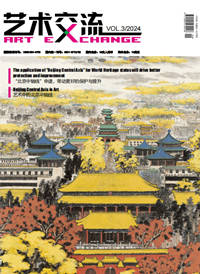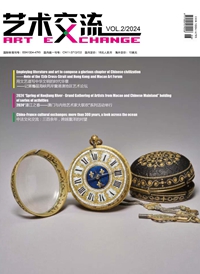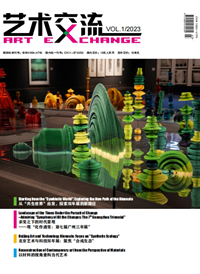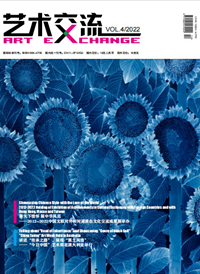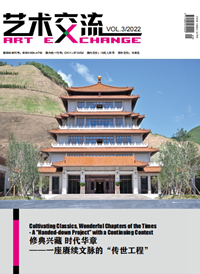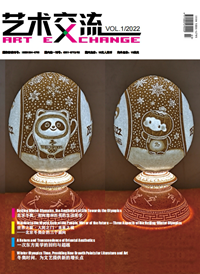
Installation View by Plil Chang

The Gridded Ghost Gamer by Minstrel Kulik

Digital Deli by Marco Scozzaro

Untitled by sarah Palmer

Four Failures by Matt Porter
Lishui, a city to the southwest of Zhejiang Province indulged in the atmosphere of photography lately, has become the Center of Discussion drawing wide attention on 15-19, November —— a series of events of the 2nd International Photography Symposium 2017 Lishui Photography Festival, the 26th National Exhibition of Photography not only gains much commendation and sound reputation in the circle of photography, but wins 720 million hits on the related topic of Sina micro-blog.
With the theme of Image of Hypermedia Era, the events adhere to the academic, international mass-based and brand-oriented characteristics and focus on the conception of Competitive Products, Features, Integration, Sharing and Openness. Some 1,050 exhibitions of diverse categories, convening over 5,000 industry elite and photography groups from more than 50 countries worldwide, have presented a feast of images combining light and shadow, thought and changes.
Showing comprehensive inclusiveness, the exhibition, making a record high in the domestic photography festival events in terms of amount and scale, is uncommonly seen amongst its counterparts internationally. Alleys, theaters, museums and art galleries… the 15 exhibitions of 2017 Lishui Photography Festival turned the city into a sea of images.
Point of View: Academic Contention, Boundary Expansion
As the theme of the 2nd International Photography Symposium, the Image of Hypermedia Era discourses the foresight of academic issues. The symposium has invited tens of photography theorists, critics, higher education professors, curators of museum and art museums, media editors, events organizers and photographers.
For this academic subject, GAO Shiqang, Director of Experimental Art Department of School of Intermedia Art of China Academy of Art, thinks that the media relationship will enter into a path of continuous evolution with the accelerated iteration of media technology. The image---the most typical carrier of media, and its relationship concerning production, communication, acceptance and consumption and etc. will also be---overthrown and surpassed. In the era of We-media, everybody is media, creator and communicator of images, consumer and audience. However, with the proliferation of image production coming from the digital age, and the overload of image transmission and communication generating from the Internet age, people make corresponding self-production out of instinct, ignoring the overwhelming majority of information, including those images. The theme of Image of Hypermedia Era undoubtedly raises a question: how the image creators, communicators and receivers treat themselves and even communicate with the world in the present situation and reality of images?
However, for ZHANG Haitao, an event organizer and art critic, the media of photography expand the carrier, technology and material in different times. The crossover between traditional media and new media, beyond their own carriers’ bound, will also generate new modernity, experimentation and sense of future. The theme of Image of Hypermedia Era discusses about the means of the image art involved into the reality and how the spirit will enjoy more freedom and maximum the function of humanistic inspiration of art.
In the opinion of James Ramer, an event organizer and director of photography department of Parsons the New School for Design, for the past 25 years, the photography has experienced three waves of reforms, the first was image digitalization, the second image networking and the final application of computer technology in photography. The latter two technology innovation, changing the relationship between people and images in a fundamental manner, has laid foundation for the brand-new conception of photography, an unprecedentedly unique time of creation and development in this media history, containing original potential stemmed from history. The image culture has reached a type of Super Speed, generating new type of connection, and new concept and strategy in a highly network-oriented environment of computer.
Focus: Perfect combination of dynamic and still, internal and external.
The exhibition with academic subject drawing people’s attention has interpreted the development possibility of photography via means of VR, video, device, projection and other scientific means and contemporary art techniques. As far as the photography concerned, freezing the glamour of moment is still the root of photography. The multimedia convergence not only brings up infinite possibility for photography, an art with a short history, but changes people’s behavior and means of exhibition participation as well.
With the theme of How Future Comes, James Ramer has invited 28 representatives of modern artists from 17 countries and regions to discuss about the extension of photographic boundary and its direction. Each artist is challenging traditional photography concepts with the intention of telling the core issues of the new era through art, including issues such as network image of themselves, the scalability of history and time in the computing environment, identity in the age of social media, and the effects of technology itself and etc.
The Another Generation exhibition hosted by the invited Elysee Museum in Switzerland features 50 young photographers from major photographic professions worldwide, each photographer, from the different cultural perspectives of their own countries, presents a very rich academic perspective and international horizon under the contemporary artistic context with images as the carrier.
The concept of "hypermedia" showcases the most comprehensive play in "If Art Can Come Back Again" curated by DENG Yan, a teacher of Tsinghua University's Academy of Fine Arts, artist and event organizer. Huge black space is mainly occupied by a variety of video projection images, the exhibition's intentions lie in the visual transition from the plane to the space. The exhibition, composed of artworks by 16 well-known artists both at home and abroad, involves multimedia videos, device, graphic images and other forms of presentation. By presenting the artist's multi-media transformation of the language of photographic art ontology, the exhibition, upon photography considered an art, explores the aesthetic possibilities of the image aesthetic system in the face of new media of science and technology intervention. The exhibition is a brand-new experiment and exploration of photography from "planar presentation" to "physical space occupancy", though it is most difficult to allow each viewer to acknowledge the meaning of every independent video in a short time, yet all images have an interaction. Some viewers commented: "The artist is doing a funny thing with a naive heart."
The project of "moving mountains and stopping water", planned by GAO Shiqiang, presents the concept of "moving mountains" and "stopping water" in the space, invigorating the landscape world of the images by inviting 32 artists' theme works concerning landscape world view, including photography, video, devices, calligraphy and other works. From the list of exhibitors, it is observed that these artists present a multi-media art exhibition by a cross-disciplinary group of academic artists, both in their age span and the art field.
WANG Peiquan, director of the Organizing Committee of the event, said that the committee holds an open and inclusive attitude to the artists and seeks to make the audience observe a variety of exhibition forms. Among them, DENG Yan's exhibition is avant-garde, showing the close relationship between the way and science and technology; exhibition of James Ramer presents more abundance; Elysee Museum's exhibition, however, is academic-oriented, reflecting the contemporary photography and video art trends; meanwhile, that of GAO Shiqiang echoes the Chinese traditional culture. It is a collision and dialogue, in general, between Eastern and Western cultures in the era of hypermedia. WANG Peiquan also revealed that at the invitation of James Ramer’s organizing the exhibition, he found that the exhibition curated by SONG Cuiting, the organizer of the last photography festival in South Korea, inspired his intention of "PK" with her: "She is so great. I want to Make better! "
Hot Spots: National Exhibition of Photography, Story of China
As the country’s oldest and largest national photographic exhibition, the appeal of national photographic art exhibition is unprecedented. The 26th National Film Festival has solicited 216,065 entries, a figure that once again set a record for the number of submitted works for the event. Meanwhile, the selected 368 works became the Heated Focus of many photographers.
The first collective debut of the selected works after the official announcement from the 26th National Film Festival is in Lishui. On the way to the exhibition, groups of viewers often encountered asked: where is the national photo exhibition? Entering into the Lishui Museum, one can experience the event popularity --- there was no such a fast walking viewer and people were drawn before pieces of work, whispering thoughts. If a selected photographer was HIT on the scene, it would undoubtedly lead to a small upsurge of INTERVIEW.
Documentary photography remains the most watched. The moving tension of FAN Xianhai’s Field Troops Parade shows the majestic momentum of Chinese army, navy and air force, the high spirit and battle will of soldiers in parade were vividly portrayed; In XIANG Wenxiang's warm hands, the moment passed by the son covering the snow for his mother showed the temperature of love; YU Hongchun's Life of China's First J-10 Female Pilot recorded the immaturity of the sacrificed female pilot YU Xu in uniform, the playfulness in daily life, the concentration in training, and the glory of her short life, bringing the viewers into the deep sympathy to the lost of this young life; PAN Yongqiang's Days of Old Industrial Restructuring, all the images framed the inevitable pains experienced by the industrial workers in the process of energy conservation and emission reduction and enterprise upgrading and transformation. They nurtured the workers' reactions to the upcoming job changing, life expectations and their inner world... Great works, filled with visual tension, artistic vitality and life strength, mostly reflect the grass-roots life.
Concerns and discussions on the National Photography Exhibition have taken root in the first exhibition of Lishui and continue to be fermented in the photographic industry. The realistic ecology of Chinese photography, which is reflected in the event, deserves further thinking by followers and participants.
Pivot: Articles of Photography, Integration into Industry
With the development of information technology, mass life has now entered the era of mass photography, accessible to participation by all, it becomes an integral part of people's lives. Image of Hypermedia Era, a seemingly esoteric photography exhibition theme has long been incorporated into the daily life of Lishui people and the city photographers. In addition to those figures of photography bearing the heart of learning in the event, citizens also take their free time to take part in the exhibitions. Lishui residents SHU Rongyu specifically accompanied his wife to see the exhibition, he said: "If it were not for this exhibition, we don’t have the opportunity to see such photos, we Lishui people are most happy about it."
Due to its rich history and culture, Lishui has a unique natural landscape and a colorful ethnic custom. It is named the first "hometown of photography in China" by the China Photographers Association. With a good knowledge of the development prospects and advantages of ecological civilization, Lishui City has compiled Lishui Photography Development Plan (2011-2020) since 2011, hoping that photography would not only serve as an important part of meeting the needs of the people's good life, but also become a crucial growth point of the cultural industry. Today, there are three state-level photographic creation bases, 22 municipal-level bases, two photographic industrial parks and 100 photographic collecting bases and the first Chinese photographic museum is also located in Lishui, already generating high-end photography forum, Walking in Oujiang Lishui Photography Exhibition, photography ranking and other branded projects. It is reported that the annual net increase of tourist arrivals to Lishui, due to photography, will be in the hundreds of thousands. Tourism revenue will also increase at an annual rate of over 25%. The proportion of tourism revenue in the GDP has reached nearly 10%. The collision between Lishui’s photographic culture and tourism industry inspires a clear fusion effect. With these external and internal forces, the photography culture stemming from the "Green Environment" turns Lishui into a renowned city of photography and beautiful landscape.




